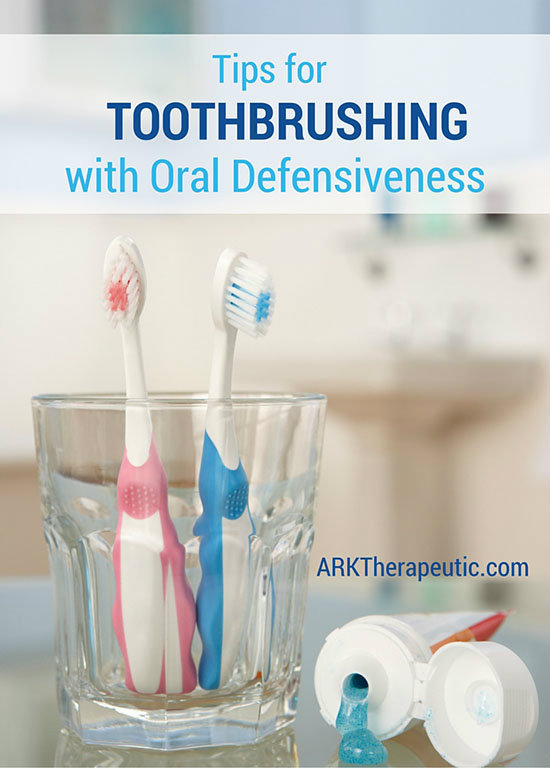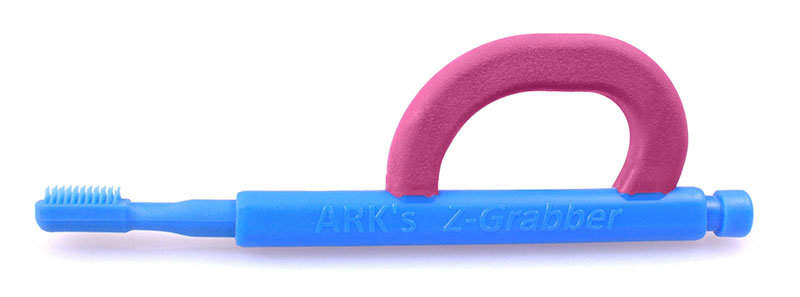Tips for Toothbrushing with Oral Defensiveness
Posted by Debra C. Lowsky, MS, CCC-SLP on 25th Oct 2012
Oral defensiveness falls into two main categories: HYPOsensitivity and HYPERsensitivity. Individuals with hyposensitivities have low oral tone and very little awareness of what's going on inside their mouths. This "oral numbness" so to speak can cause anxiety and fear when it comes to toothbrushing. On the other hand, individuals with hypersensitivities are overly conscious of and sensitive to oral stimulation. Even the slightest touch can be overwhelming and even painful. In both cases, it is important to normalize sensation within the oral cavity in order to take care of those pearly whites!
First things first, I recommend seeing a dentist to rule out any underlying medical issues. For example, if the teeth haven't been routinely and properly brushed, the gums may be sensitive, which may be confused for oral defensiveness. Once you've ruled out medical complications, I recommend seeing a speech-language pathologist and/or occupational therapist trained in oral motor therapy. These professionals will be able to complete a sensory evaluation and put together a treatment plan considering all factors.
Once you have ruled out any underlying medical issues, gum massage is a great overall exercise to do, as it provides input to all areas of the mouth. This tactile feedback can be very calming and enjoyable for hyposensitive individuals. It can also slowly desensitize the mouth for hypersensitive individuals. If you can't get into the mouth for gum massage, try these strategies first.
.

.
When it comes to actual toothbrushing, there are several things you can try to decrease the anxiety and make it a more comfortable experience:
• First explain why dental hygiene is important. If the child understands the benefits of toothbrushing, he/she may be more encouraged to do it.
• Allow the child to pick out his/her own toothbrush. He/she might be more willing to use a toothbrush if it's in a favorite color or with a cool design on it, etc.
• Use a vibrating toothbrush. ARK has two different Brush Tips available (to be used with either the Z-Vibe or Z-Grabber like in the image below). The soft Brush Tip is perfect for gentle gum massage as an alternative to using your finger. The yellow Brush Tip has firmer bristles and is closer to a standard toothbrush. Many individuals find vibration soothing and calming, and so they may be more open to toothbrushing with vibration. Vibration can also be very helpful in providing oral sensory input and de-sensitizing.

.
• If the gums are overly sensitive, another option is to use your fingertip in the beginning with a bit of toothpaste.
• Allow the child to familiarize him/herself with the toothbrush before using it. Let him/her feel it in the hands, then the arms, slowly working towards the mouth.
• Allow the child to brush his/her own teeth while watching in the mirror. This will give him/her more control over the situation as well as visual feedback. But sometimes mirrors can be overstimulating and distracting, so monitor its use.
• You can also model by brushing your own teeth. Take turns and let the individual brush your teeth (with your own Brush Tip or toothbrush). He/she can also practice brushing the teeth of a doll or puppet.
• Sometimes it may be someone other than yourself to get the child to brush his or her teeth. So, check and see if an aunt, teacher, or sibling can be of assistance here.
• Sing songs, count, or say the ABC's to establish a timeline. Let the child know that you are going to stop when you finish the ABC's, when you count to 10, etc. Make sure to stop exactly when you're supposed to. Again, this is about giving them more control over the situation, which helps reduce stress.
• Establish a routine so that they know what to expect. For example, I had one child who would always take a sip of water beforehand, then brush the upper left teeth, followed by the upper right, and then the lowers. Always the same order of events.
• Sometimes choosing another spot other than the bathroom can help, perhaps the kitchen or a cozy chair.
• Is the temperature of the water too cold? Too hot?
• There are toothpastes available for sensitive teeth. You can also change the flavor of the toothpaste, as there may be one that is preferred over of the present one, which will increase tolerance.
.
Even if the child just puts toothpaste on the brush, that's a start. Remember to take baby steps. It may take time to get there, and that's okay! Just be patient, consistent, and persistent.
.
Debbie
Debra C. Lowsky, MS, CCC-SLP
.
